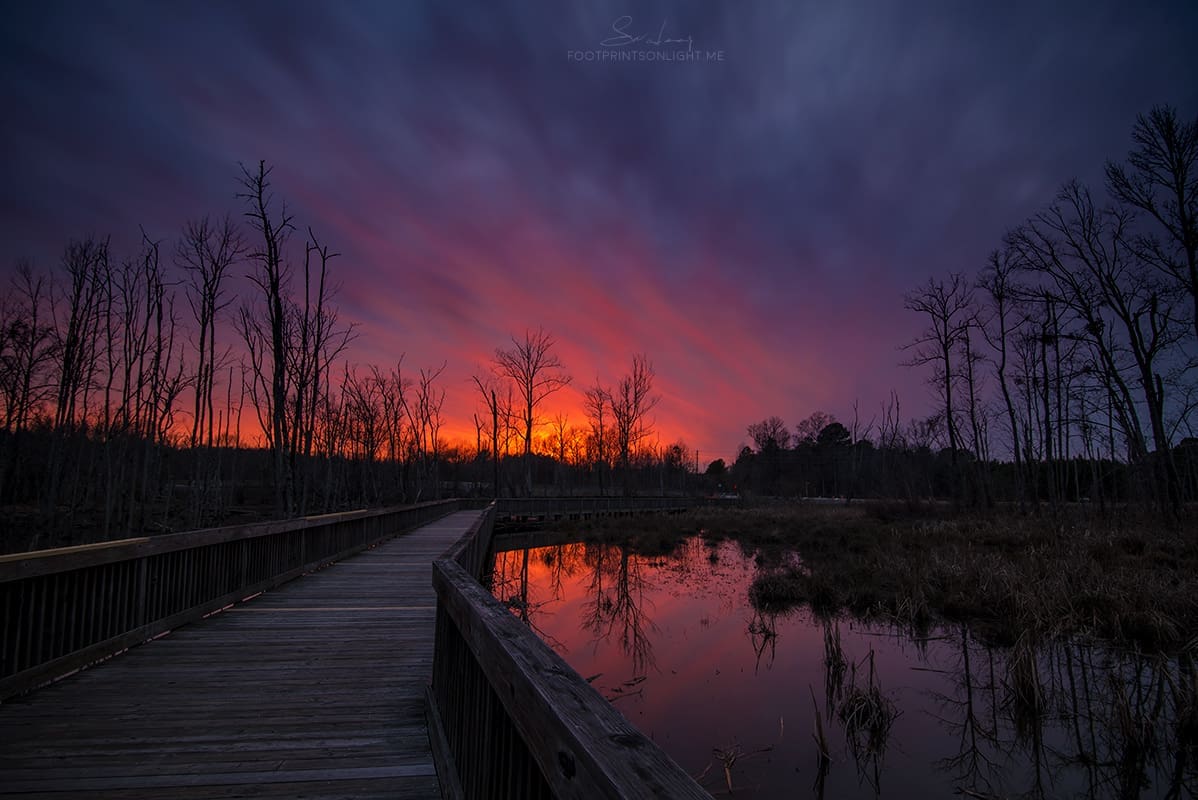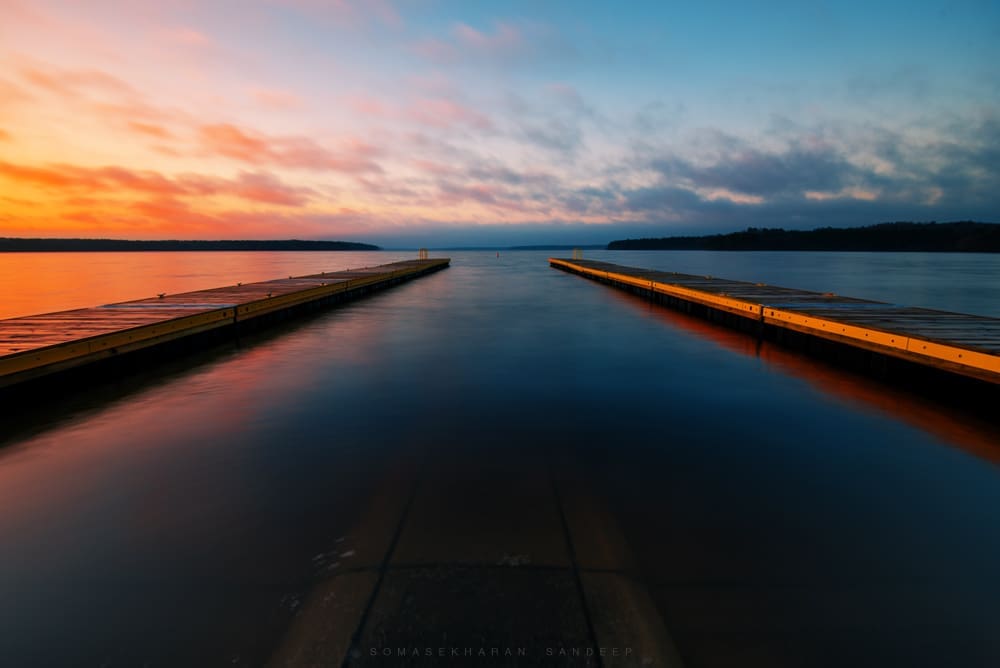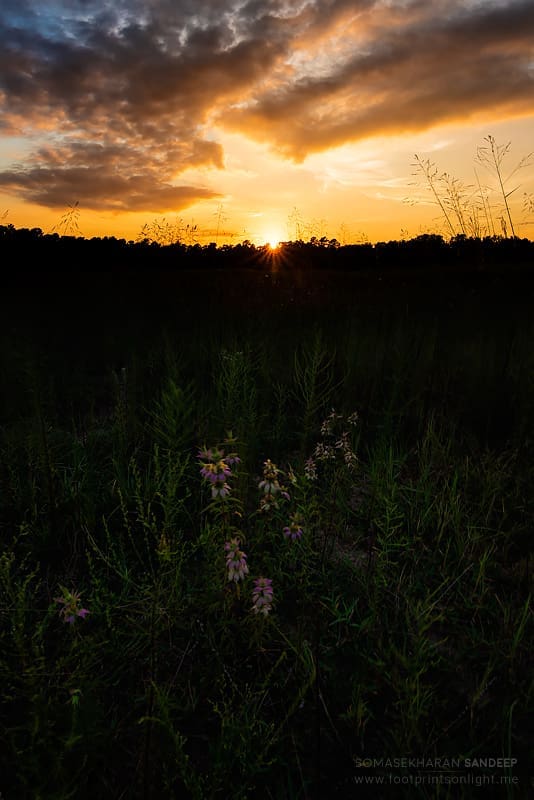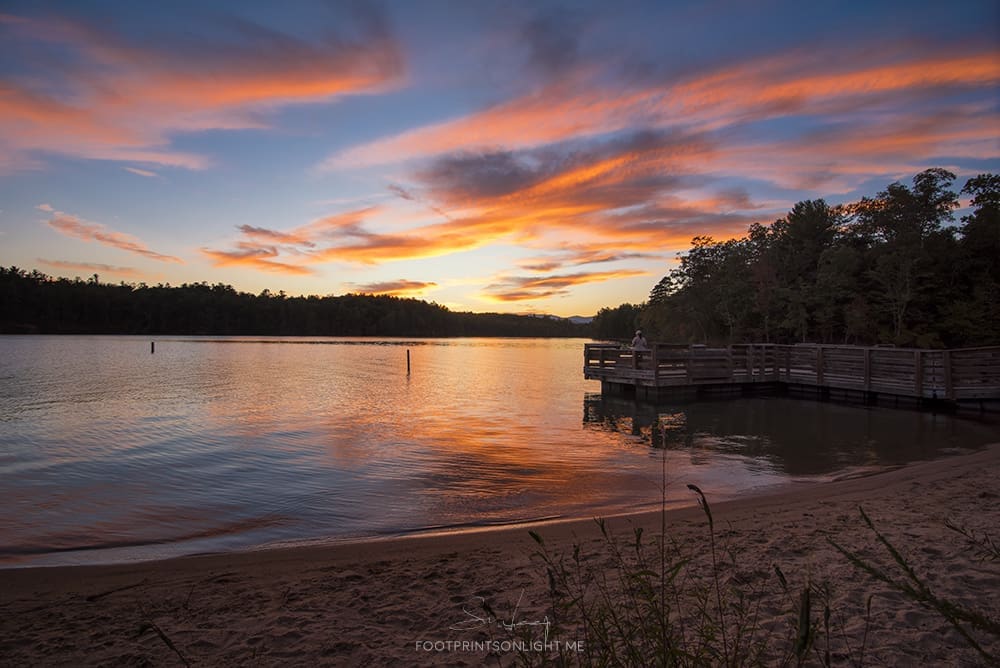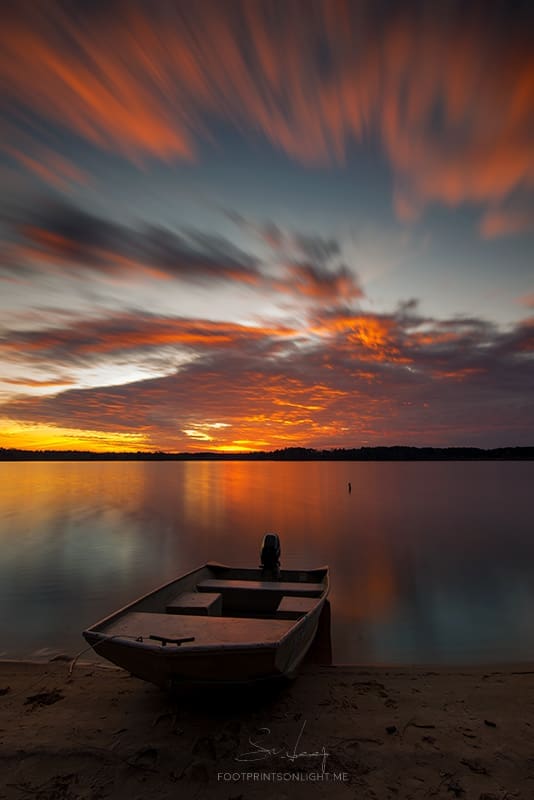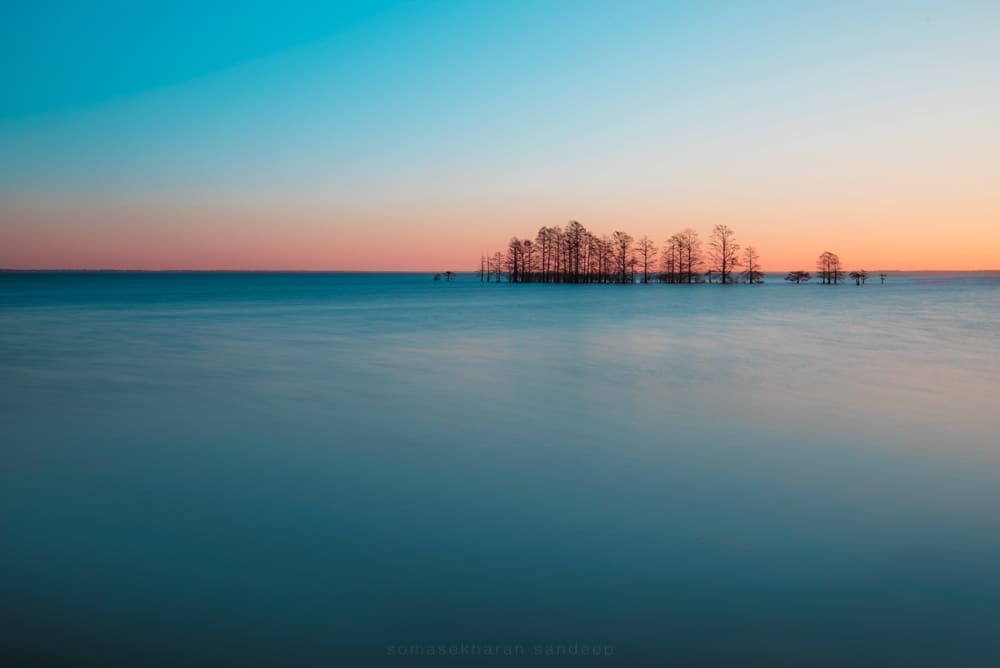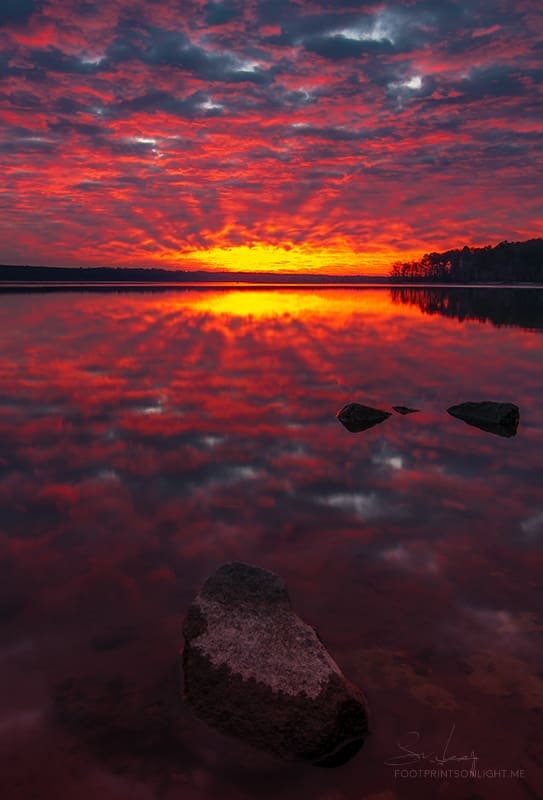- In the last few years, my drive for photographing birds has started running out, observing all the trophy hunting happening around me. That kept me away from clicking and I feared I would let my camera and lenses go to rust (or worse, fungus). Incidentally, I ran into a few companions who had an interest in landscape photography, and I started tagging along. The more I got the hang of it, the more I started enjoying sunrises and sunsets as the colorful skies made even the most ordinary scene look breathtaking.

- Ice and fire converge
We would spend weeks and weeks trying to assess the forecasted weather, to figure out when would be the right day to go out shooting. That is because partially cloudy days/ nights are the safest bet for getting to see a colorful sunrise or sunset. However, no amount of science and prediction prepares you for the masterful artwork that unfolds on some days (or the fizzled-out sunsets that promised much to begin with).

- Goodnight, sweet darlings!
The order of events of a sunrise meter out like a well-written piece of poetry. First comes the tiny speck of light in the east against the dark blue sky. For the next few minutes, the sky is a gradient of pink to deep blue. The pink turns a glowing orange, and then the gradient eases out to an even blue as the sun peeks over the horizon. The sunset is just a sunrise turned upside down on its head, a perfect mirror image.
But when the sky is filled with clouds with the right intention, that poetry turns into a rhapsody. You wouldn’t be blamed if your ears can pick up the sounds of crackling flames in the skies, over the wind. Or if you can feel an oddly satisfying warmth on your skin, as if you were near a hearth.

- Dragons unleashing mayhem in the horizon…
In the much loved Calvin and Hobbes series by Bill Watterson, Calvin asks his father, “Dad, why is the sky red when the sun sets?” Dad replies, “It is all the oxygen in the atmosphere catching fire when the sun goes down.” While the comic made us laugh out at the goofiness of the father, the beauty of that imagery is something we can’t deny.

- At peace with the burn
So what actually causes the sunrise/sunset colors?
We all know sunlight is comprised of seven visible colors of light, red being the lowest wavelength and violet being the shortest. The particles in the atmosphere scatter the lower wavelengths more. Due to the longer distance that the sun’s rays need to travel through the atmosphere during dawn and dusk, the lower wavelengths collide with the particles and bounce off, and the reds and yellows and oranges sneak past these particles and bounce off the clouds. Suddenly, the sky explodes in a frenzy of warm colors.

- Watching the burn
And what happens when there are no clouds? There is nothing to reflect those pretty reds and oranges back for us to see, and they keep traveling upwards till they escape to outer space. That is when you are left with that blue gradient.

- Placid
And what if the horizon is not clear at all? Then the sun’s rays are brutally blocked by the clouds before they reach our part of the sky. That is when you are left with bland, grey skies.
As technology becomes more accessible, we see models and algorithms predict colorful sunrises and sunsets better and better, which means we are able to predict exactly how vibrant every dawn and dusk are. Sunsetwx.com is one such website for sunset stalkers in the US. But, despite the models and artificial intelligence, there are some things that we can never predict until we see them unfold right in front of our eyes. One such thing is the kind of colors that get splashed and the resulting patterns. That is totally up to that sublime artist, Nature.

- Nuclear!
Enjoy more of Sandy’s photographs at his personal website Footprints on Light and follow him on Instagram
- Costa Rica Diaries – Parting Gifts - May 5, 2024
- Costa Rica Day 6 – Resplendent Quetzal: Part Bird, Part God and Full-Time Economy Driver - April 17, 2024
- Costa Rica Day 5 – Toucan Trees and Wild Dreams Coming True - March 22, 2024

